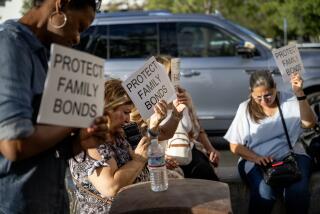Report: More Children Lived in Nuclear Families in ‘90s
- Share via
WASHINGTON — The nuclear family of yesteryear--mom and dad living with each other and their biological children--may not be as endangered as it sometimes seems. The percentage of children living in these traditional families rose during the early 1990s.
At the same time, other families became increasingly complex, with more stepparents, grandparents and adoptive parents raising children, the Census Bureau says in a report being released today.
It is the second report on the living arrangements of children, and updates findings from a 1991 study. The new data examine the 71.5 million children living in the United States in fall 1996.
The report, based on a survey of 37,000 households, rejects and builds upon common perceptions of increasingly fractured families.
“It’s not entirely a clear picture,” said the Census Bureau’s Jason Fields, the report’s author.
Most unexpected may be the rise in the portion of children living in so-called nuclear families--in which the children live with their biological mother and father and no one else. From 1991 to 1996, it rose from 51% to 56%.
But this does not necessarily mean that more couples are staying together. Rather, as the total number of children increased, more of them were being born into traditional households, Fields said.
That is partly because couples married or began having children later in life, he said. “People who delayed marriage for education or career and have decided at an older age than in the past, ‘Now we’re getting married,’ ” he said. “More marriages and more families are being formed, and a lot of them are forming as these traditional nuclear families.”
In addition, births to teenagers and to unmarried older women have fallen, helping to slow a three-decade climb in the number of children living with single parents. Still, 33% of babies are born to unmarried women.
More to Read
Sign up for Essential California
The most important California stories and recommendations in your inbox every morning.
You may occasionally receive promotional content from the Los Angeles Times.













